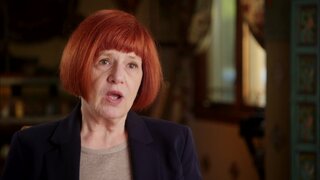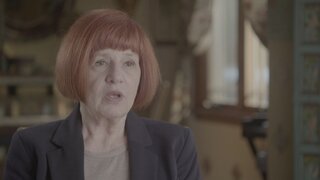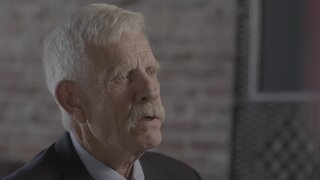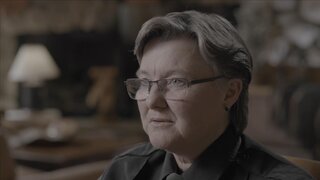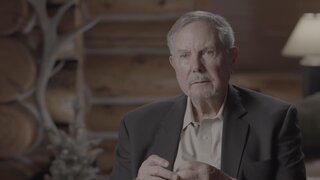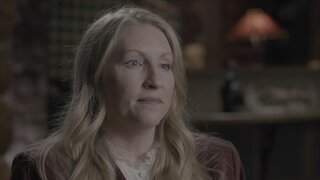Create a free profile to get unlimited access to exclusive videos, breaking news, sweepstakes, and more!
'This Girl Went Through Hell’: Detectives Recall Devastating Murder Of Missing Teen
Suzanne Thomas went missing after attending a California party on a summer night in 1988.
On an uneventful evening in July 1988, 16-year-old Suzanne Thomas told her family that she was going over to a friend's house for a couple of hours, only to never be seen alive by them again.
Her parents awoke the next day to find that their daughter still hadn't returned home, and when her absence stretched on to the following day — and a search for her among her friends proved fruitless — her parents went to the police to report that their daughter had been missing for more than 36 hours.
"I was telling myself that Suzanne was out partying, she probably met somebody and she couldn't get to a phone, or she just didn't want to get yelled at by my dad," her sister, Mandy Thomas, told Oxygen’s “Buried In The Backyard,” airing Thursdays at 8/7c on Oxygen.
Unfortunately for the Thomas family, they never saw Suzanne alive again. On July 22, the same day that they filed a missing person report with police, Los Angeles authorities made a gruesome discovery. A man had been hiking in the Hollywood Hills with his dog only to come across a human foot protruding from the ground.
The medical examiner’s office performed an autopsy on the young woman and their report showed that the victim had "died a horrible death," Dennis Kilcoyne, a homicide detective with the Los Angeles Police Department who worked on the case, told "Buried In The Backyard." The victim had been sexually assaulted, badly beaten, strangled, and stabbed with what the coroner suspected was a hunting knife.
"This girl went through hell," Kilcoyne said.
Dental records confirmed the worst: The girl who'd been found dead in the woods was missing teen Suzanne Thomas. When authorities delivered the news to the family that night, they were devastated.
"We were just in shock. We couldn't believe it," Suzanne’s sister, Angel Castillo, told Oxygen.
As the family mourned their loss, authorities, spurred by the knowledge a brutal killer was on the loose, launched an investigation. After hitting up the spots where Suzanne was known to hang out and speaking to those who she was often seen spending time with, they learned that on the night she disappeared, Suzanne told her friends that she was going to meet a man named George at his apartment.
Using Suzanne's address book, police found the George who they were looking for living in an apartment in the Van Nuys neighborhood in North Hollywood. Though he at first seemed reluctant to speak with authorities, he warmed up once he learned that they were not there to arrest him for his alleged habit of partying with underage girls. He admitted Suzanne had been at his place on the night that she went missing.
George claimed that at around 3 or 4 in the morning Suzanne said that she wanted to go home, and when a white man with long hair and a beard offered her a ride, she accepted and they left together in a white station wagon.
Investigators then began to focus their attention on tracking down the man in the white station wagon. After more conversations with Suzanne's friends, detectives learned that a man in a station wagon had often been seen visiting the taco stand where Suzanne and her friends would hang out. Although most had no idea who he was, a friend of Suzanne's named Dippy eventually told police the man was called Charlie and that she would sometimes "party" with him and they would ride together in his car.
When Dippy led police to one of the places where he would take her occasionally, they found themselves at the same location where Suzanne’s body had been found.
Within days of investigators’ conversation with Dippy, the mysterious Charlie was spotted visiting the taco stand yet again — but this time, unbeknownst to him, undercover detectives were there waiting to write down his license plate number. From that, they were able discover his full name: Charles Anderson.
His name wasn't the only thing authorities were able to discover. Anderson lived in Glendale and had recently been released from prison after being convicted of violent sex-related offenses. Between the years 1967 and 1975, he served time for kidnapping women at bars and sexually assaulting them, and a week after his release in 1975, he committed yet another violent crime: Spotting a woman alone outside of a real estate office, he attacked her, beating her nearly to death with an ashtray, cutting her face, stabbing her, and sexually assaulting her. He was arrested and convicted again, and released from prison a second time in 1982, the Los Angeles Times reported in 1990.
With the reveal of their lead suspect's violent history, police began to feel certain that Anderson was the man they were looking for. When authorities went to his house to execute a search warrant, Anderson, a white man with long hair and a beard, answered the door, and investigators quickly noticed that there was blood on his pants. And while a search of Anderson’s home did not reveal a murder weapon, they did find a small amount of blood in his car.
"After we find the blood droplets in the back of the car, my partner and I are pretty well convinced we got the right guy," Kilcoyne told "Buried In The Backyard."
During a police interview, Anderson admitted to visiting the same area where Suzanne was found, but claimed to have been with a family member on the night of her disappearance. He also eventually admitted to knowing who Suzanne was, but claimed that he'd only given her a ride to George's house for the party and then dropped her off later near the taco stand.
Unfortunately, police needed more information to link Anderson to the crime: They needed to find out what blood type Suzanne had, which proved difficult because the coroner's office hadn't been able to figure it during the initial autopsy, as the heat had greatly decomposed Suzanne’s body by the time she was found. Her family also did not have any records stating what her blood type had been, leading police to make the difficult decision to exhume Suzanne's body.
"The mindset in the DNA world at that time is that bone marrow contained the highest percentage of DNA for blood typing," Kilcoyne explained to producers.
The medical examiner's office was able to extract marrow from Suzanne's bones, and authorities sent a sample out to a lab to be tested alongside the blood found in Anderson’s car. Unfortunately, it proved to be another dead end: Due to how decomposed Suzanne’s body was, lab techs were unable to get a definitive conclusion in regard to her blood type.
However, a break in the case came when researchers were able to take another look at a tampon that had been found with Suzanne's body and get her blood type from it. Suzanne’s blood type was a match to the blood found in Anderson’s car.
"That's when we found the home run that we needed, right there," Kilcoyne told "Buried In The Backyard." "We got it."
To investigators, it was clear what had happened: Anderson, under the guise of giving Suzanne a ride, had taken her to the woods, where he tried to initiate sex with her in the back of his car and then brutally beat her when she resisted. He then dragged her out of the car and sexually assaulted her before killing her and burying her body, according to "Buried In The Backyard."
Anderson was charged with first-degree murder and numerous sex crimes in relation to the death of Suzanne Thomas, bringing about closure for her family.
"It just felt like a weight was lifted. We could actually start living again and just not be in fear and be scared that whoever this was was going to come back and harm us," Mandy Thomas told producers.
Anderson stood trial two years later and was found guilty. He spent 26 years in prison before he died behind bars in 2014.
For more information on this case and others like it, tune in to “Buried in the Backyard” on Oxygen on Thursdays at 8/7c or stream any time at Oxygen.com.

